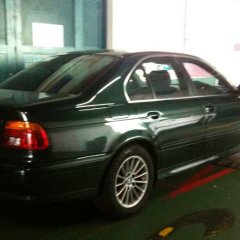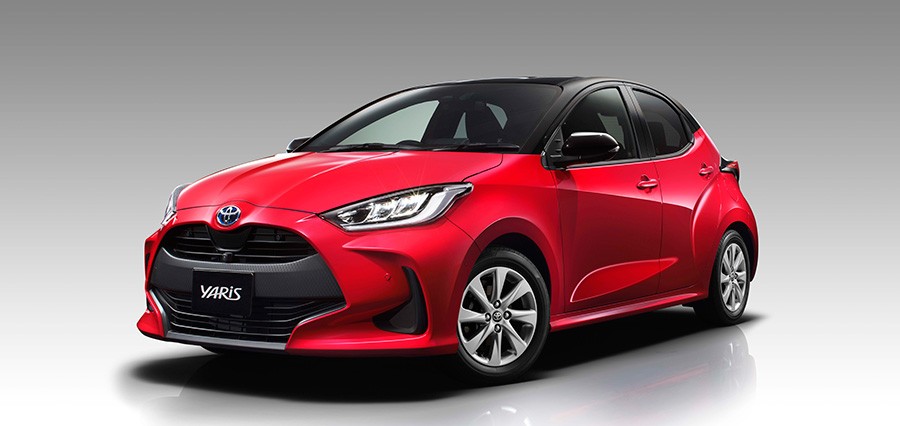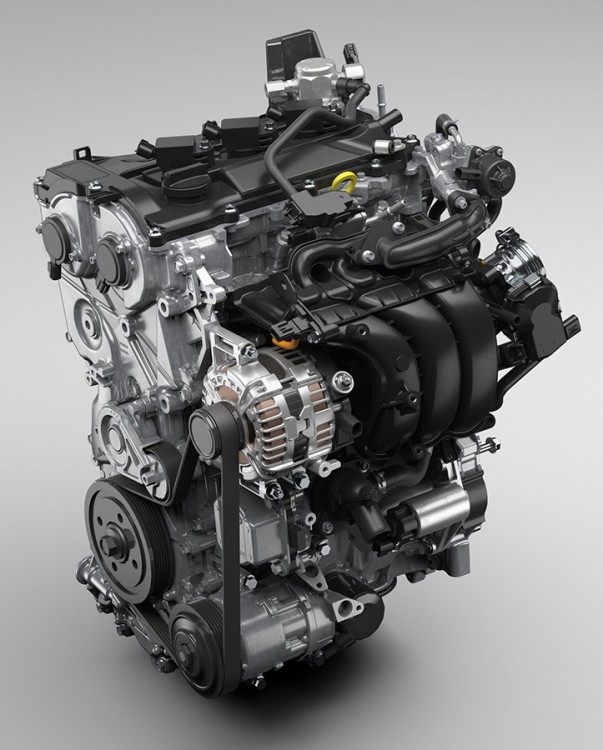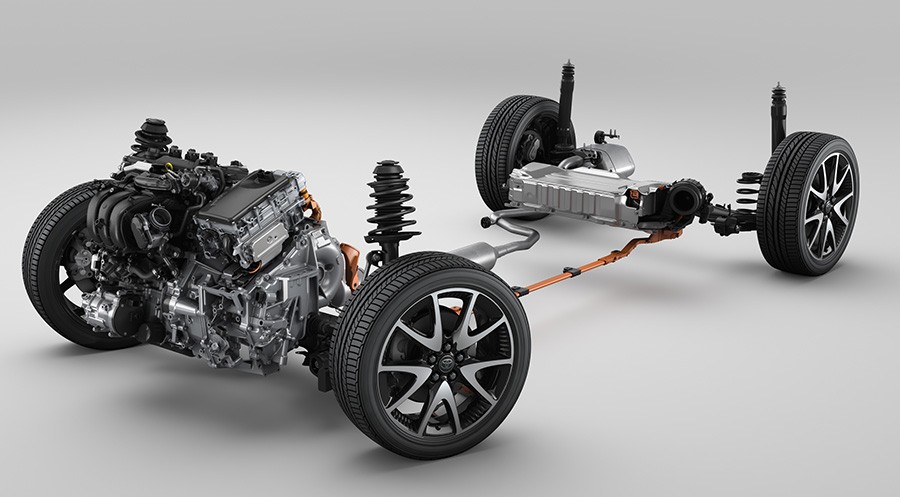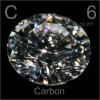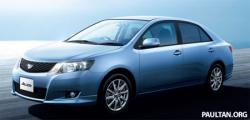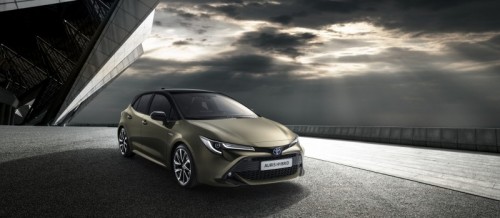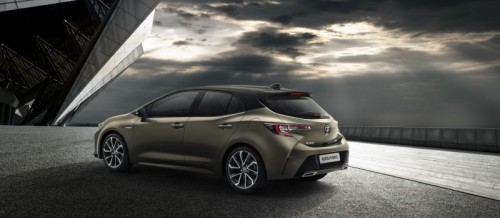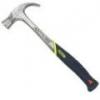Search the Community
Showing results for tags 'toyota singapore'.
-
https://global.toyota/en/newsroom/toyota/29933748.html 1.5L Dynamic Force Engine 1.5L Dynamic Force Hybrid System Direct CVT for 1.5L
- 105 replies
-
- 7
-

-
- toyotayaris
- toyota yaris
-
(and 1 more)
Tagged with:
-
Move aside Alphard and Vellfire, this is the new King in large size MPV segment. But honestly, it look more like a Hiace passenger van to me, than a luxurious full size MPV. A full-size wagon, the new Granace commands outstanding presence, making full use of the broad 5.3 meters in length and 1.97 meters in width as a high-quality and comfortable interior space. Adopting a semi-bonnet package, two types of seating arrangements are available: the six-seater with seats in three rows of two, and the eight-seater with seats in four rows of two. The Granace features high-quality performance, delivering sophisticated riding comfort, superior control stability, and a spacious interior. Main features Exterior style that realizes "overwhelming presence and luxury" The large radiator grille embellished with metallic accents flows seamlessly into the headlamps, which project in vertical and horizontal directions, realizing a gorgeous and bold face. The distinctive LED daytime running lamps*6 pierce the headlamps, and together with the projective twin-lens LED headlamps that flow into the decorative chrome frame, express sophistication suitable for luxury cars. "High quality" and "gorgeous" cockpit space The black-infused instrument panel creates a luxurious atmosphere, featuring metallic accents on the air-conditioner outlets and wood-grain embellishment in front of the front passenger seat. The meter hood is wrapped in leather and genuine stitching further lends an air of quality. High-quality space with hospitality in mind leverages spaciousness - In addition to the three-row six-seater, a four-row eight-seater is also available to meet the wide ranging needs of users. - The four seats comprising the second and third rows feature leather captain seats designed for complete relaxation provide a high-quality interior space. In addition to comfortable seating, the new model is equipped with a long slide mechanism and an ottoman mechanism in and other amenities that enhance convenience and comfort. - Wood grain decorations flow from the back of the front seats toward the side trim as if to wrap rear seat passengers in comfort. The LED side color illumination is gently lit, further expressing an elegant and calm quality. Sophisticated high-quality performance - Adopted front-wheel drive layout. Equipped with a 1GD 2.8-liter clean diesel engine and a six-speed automatic transmission, achieving smooth and torque-strong driving from low speeds. - The newly developed trailing-link rigid-axle suspension is used for the rear suspension. The high rigidity body, including the adoption of a ring-shaped frame, achieves a luxurious, comfortable ride with stable handling. - Thorough vibration and sound insulation measures provide a serene quietness suitable for luxury wagons in various road environments. Enhanced advanced equipment - Comes standard with the latest version of Toyota Safety Sense, featuring improved sensing functions that make use of the pre-collision safety system that detects pedestrians during the day and at night, as well as cyclists during the day. - Fully equipped with safety equipment for safety and peace of mind such as Intelligent Clearance Sonar with Parking Support Brakes (Stationary Objects) that helps reduce and/or mitigate damage from collisions during low-speed driving in parking lots, etc. - Equipped with advanced Display Audio (DA). The smartphone linkage function including SDL allows customers to connect with smartphones and operate map applications and music via touch screen display. Specifications Ext. Dimensions: 5,300mm (L) x 1,970mm (W) x 1,990mm (H) Wheelbase: 3,210mm Tread: 1,670mm (F) / 1,670mm (R) Int. Dimensions: 3,290mm (L) x 1,735mm (W) x 1,290mm (H) Engine: 2,754cc Clean Diesel
-
Forget A8s and S-Classes, it’s the new Toyota Century https://www.topgear.com/car-news/tokyo-motor-show/forget-a8s-and-s-classes-its-new-toyota-century Toyota’s noble limo gets 100 per cent wool and a writing table for 2018 This month’s Tokyo motor show will show off all manner of spooky AI technology and futuristic mobility pods. But it will also debut this, the brand-new Toyota Century. Yes, brand new. But don’t go thinking this is some kind of mawkishly retro remake. Much like a Land Rover Defender or Caterham Seven, this is simply what Centurys always look like. It’s longer than the car it replaces, with the extra length in the wheelbase. There’s also more height to the rear quarters to further increase the luxury. And there’s some glorious design-speak to back up its subtle rejig over the previous Century. “While maintaining elegance in a horizontal foundational posture, the underbody, which dips slightly rearward, combined with the ascending rear cabin, secures the rear seat space and creates a supple movement when viewed from the side.” Don’t tell us the images above don’t have you thinking the same. While rival limos like Audi A8s and Merc S-Classes cover everything in leather to make you feel suitably ensconced in the back, the Century is far more dignified. Its seats are “100 per cent wool”. You can still spec leather, but why have leather when you can have wool? There are lots of sops to luxury you’ll be familiar with – massaging seats, 20-speaker stereo, many air con controls for rear passengers – but there’s also a writing table. How we’d love to craft TopGear.com from one of those. The same goes for the Century’s powertrain. It’s a hybrid – as is fashionable – but the electric motor pairs up with a 5.0-litre V8 rather than anything boring and downsized. The whole caboodle of anti-crash tech and blind-spot warnings are all on board, but the latter is presumably necessary when the net curtains are drawn in the back. If you can’t tell, we’re quite smitten. We’ll have a closer look at this – and all the other fancy stuff – at the Tokyo show in a couple of weeks. Reserve us a Toyota Century writing table now…
- 11 replies
-
- 1
-

-
- toyota
- toyota century
-
(and 2 more)
Tagged with:
-
i went to test drive on sat, sharing my views below Likes - exterior design - size of car, notable presence on the road - sound proofing - boot size is huge - space for rear seat passengers is huge - front sequential turn signals looks cool; would really loveit if they used sequential for back and side signals as well - sunroof Dislikes - touchscreen on dashboard is pathetically small. those in japan seem much bigger ( )- from the boot, there is no lever/button for making the rear seats lie flat - no safety options: blind spot monitoring, rear cross traffic monitoring, tyre deflation monitoring - they removed the panoramic view monitor, which i think is available in the japanese brochures - lag before turbo engine kicks in Some excellent reviews here from Richard too: http://www.mycarforum.com/topic/2705478-harrier-2017/page-7?do=findComment&comment=6159941
- 2,803 replies
-
- 7
-

-

Toyota shows how GR Yaris is made, hints at more GR cars
kobayashiGT posted a topic in Japanese Talk
Toyota shows how GR Yaris is made, hints at more GR cars source: https://uk.motor1.com/news/429886/toyota-gr-yaris-factory-video/ Toyota wanted an assembly line that could mass produce sports cars of a consistently high quality. The Toyota GR Yaris seems like a fantastic, little hot hatch. In a recently released video, the automaker shows the assembly line that builds the GR Yaris and would probably handle assembly of future performance vehicles, too. The dedicated GR production line is at Toyota's Motomachi factory. The automaker set it to move assembly through various cells that allow for more work by hand than a standard vehicle at this plant. As the company describes the strategy in the video, the goal is to have a place that can "produce millions of sports cars without any difference in quality." A GR Yaris is not just the standard model with a few different parts. For example, there's an additional 11 metres of structural adhesive and 200 extra welds in an effort to boost rigidity. Technicians handle adjusting the alignment on each car. "With its new manufacturing methods, the GR facility is capable of handling multi-type, small-volume production, without compromising productivity," Toyota writes in the description for this video. While the statement is hardly definitive, it lends further credence to the idea that the GR Yaris is not a one-off undertaking. After making the investment to set up this production line, abandoning the effort so quickly wouldn't make much sense. The rumors are that the Corolla or the C-HR are most likely to be the next vehicles to get the GR treatment. Either of them could be fun with the GR Yaris' turbocharged 1.6-litre three-cylinder making 257 bhp and 266 lb-ft. Plus the hot hatch has a three-mode, all-wheel-drive system that lets owners select the torque split.- 23 replies
-
- 2
-

-
Hi, just to check, if i buy the Toyota Camry 2.0 (A) Understand it does not come with HID Headlights, Is it an offence if installed? Kam sia
- 754 replies
-
- 2
-

-
This car looks good. Anyone have the indication of the price? Saw 1 on the road just now along AMK. http://paultan.org/archives/2007/06/05/toy...allion-for-jdm/ Nice interior. Nice specs. Push button start somemore.
- 417 replies
-
- 1
-

-
- 4,582 replies
-
- 5
-

-
Anybody knows where can I get genuine toyota spare parts beside getting from BM? Anybody heard of a stockist by the name of "ong"?
-
Here come the Vezel Hybrid competitor... All new Toyota C-HR (even the name remind us of HRV)
- 766 replies
-
- 7
-

-
http://paultan.org/2015/07/09/2016-toyota-sienta-mpv-unveiled-for-japanese-market-2/
- 846 replies
-
- 2
-

-
I am looking at this MPV, anybody here driving ISIS or taken ride before? Could share comments? Thanks.
- 113 replies
-
- toyota
- toyota isis
-
(and 1 more)
Tagged with:
-
Would this come and sell well in Singapore? First Look: With the 2019 RAV4, Toyota gives its best-selling crossover a new rugged look http://www.nydailynews.com/autos/news/2019-toyota-rav4-preview-article-1.3900050 Considered the first-ever compact crossover, the Toyota RAV4 debuted in 1994. This brings up two thoughts: 1) that CUVs have been around much longer than the current sales craze indicates, and 2) how are there only four generations of RAV4 in 24 years? Well, the first-generation slogged through a 16-year cycle, but as consumer demands increased, vehicle life cycles decreased in retrospect. Which brings us to today’s world debut of the all-new 2019 RAV4. And the grandfather of the crossover segment is looking younger than ever: less cute ‘ute and more brute youth. Finally fashionable At first glance, the only indication that the new RAV4 is indeed a Toyota is its ever-familiar oval emblem. Outside of that, the crossover evokes brawn and strength—words that generally describe true body-on-frame trucks and SUVs rather than car-based, unibody crossovers. But the 2019 RAV4 is full of bold character lines, chiseled features, and a grille that looks just as annoyed to be sitting in traffic as you are. Even its fenders, which now feature squared-off black plastic cladding instead of body-colored metal look (and I can’t believe I’m saying this) appropriate and attractive. The new RAV4 will drop a trim (Platinum) but details for the full lineup are sparse. However, an XSE Hybrid model is all-new and with it comes standard two-tone exterior paint. A black roof is paired with shades of gray, white, silver, and a new blue to give the hybrid a distinctive exterior style but in an atypical hybrid way (i.e., not frumpy looking). Adventure grade models also receive the new double-color scheme but with a white roofline similar to smaller sibling CH-R. This is available only on black, blue, and a new of-the-land greenish hue called Lunar Rock. For 2019, with the Platinum trim gone, the Limited is left as the sole heir to RAV4 luxury. This top-of-the-line model is outfitted with 19-inch wheels and chrome accents to further distinguish its premium-ness. Tech and touchpoints Of course, the Limited receives more than just flashy alloys and shiny bits. Standard features include a power moonroof, 8-way power-adjustable driver’s seat with lumbar support, a newly-designed 7-inch infotainment touchscreen, and a rearview mirror camera, which is a North American-first for Toyota. Similar to what is available on General Motors’ premium brands, Toyota’s Digital Display Rear Mirror looks and acts like a conventional rearview mirror but toggle a switch and it will also display a high-definition, wide-angle view of what’s behind the vehicle. The Limited doesn’t hoard all the fancy gear, though, as all 2019 RAV4 models will be equipped with Entune 3.0, which includes Verizon-powered Wi-Fi connectivity, Amazon Alexa compatibility, and Apple CarPlay integration. Available Entune upgrades include Plus for a larger 8-inch touchscreen and satellite radio or Premium, which adds navigation. Also available will be up to five USB ports, wireless device charging, and an all-new 11-speaker JBL sound system. Increased performance capabilities The 2019 RAV4 will be powered by two engines: a 2.5-liter 4-cylinder paired with an 8-speed automatic, and a 2.5-liter 4-cylinder second-generation Toyota Hybrid System II engine mated to a CVT. Horsepower and fuel economy figures are not yet available but the automaker says consumers can expect improved, even best-in-class, numbers with the new model. Driving dynamics are said to have improved as well, particularly with the XSE Hybrid, which Toyota claims is the best-handling of the RAV4 lineup. The new hybrid features a sport-tuned suspension along with improved shock absorbers and springs. There also are three all-wheel-drive systems for the 2019 RAV4. Entry-level models can be optioned with the carryover AWD system, hybrids are available with AWD-i, and a new-to-Toyota dynamic torque vectoring AWD, which will be standard on Limited gasoline models and Adventure grade RAV4s. Featuring a rear driveline disconnect, the new torque-vectoring AWD system can send 50 percent of the engine torque to the rear wheels as well as distribute it to the left or right to improve handling. Additionally, when equipped with AWD, Adventure models are outfitted with Multi-Terrain Select as standard. The new system offers four driver-selectable traction modes (snow, mud, sand, and rocks) that can be adjusted on the fly. But performance isn’t the only priority in the new RAV4. For 2019, the lineup will be equipped with Toyota Safety Sense 2.0, the automaker’s second generation of advanced safety and driver-assistance technologies. Standard on all vehicles, the technology package includes: pre-collision with pedestrian detection, adaptive cruise control, lane departure warning, lane keep assist, automatic high beam as well as new-for-2019 lane tracing assist (enabled only with ACC) and road sign assist (identifies and alerts to upcoming signage). The 2019 Toyota RAV4 will go on sale at the end of this year while hybrid models will follow suit in early 2019. We expect final specs and pricing closer to its on-sale date, if not sooner. Past RAV4s XA10 XA20 XA30 XA40
- 568 replies
-
- 7
-

-
Just to have an idea who drive this wonderful MPV.. And we can organise meet-ups and all.. and also.. there is a dedicated forum : www.alphardasiaclub.com Let me get the ball rolling... 1) VellfireS / Toyota Vellfire 3.5Z-G S-Edition (Richburg Motors)
-
Hi all, I've done a search in this forum to find out more abt Materia or bB and realised the postings were dated way back to 2007/2008. Can't seem to find any recent postings of this 2 models. Have to apologise if this is deem a repeated post/thread. Am looking to buy a used 2008 Materia and would seriously appreciate if any folks driving such models to share more abt their ride. Things like FC, maintenance, pro & cons abt this model etc. Tried to google also for any car club or forum, but to no avail...... Thanks in advance
-
- 939 replies
-
- 6
-

-
The new TNGA-based sedan is bigger and more refined than before. UPDATE: Four videos added below. The first two require no Japanese language ability to understand, but the other two are predominantly in the language. After launching its absolute flagship for Japan, the Century, Toyota is now introducing the more mainstream Crown luxury sedan, which was previewed by a namesake concept last year. The automaker describes the 15th generation of the model as the first-generation connected car because it comes as standard equipped with a data communication module (DCM). Based on Toyota’s new TNGA platform, the vehicle has been tested on the Nurburgring and should deliver “outstanding handling,” “responsive driving performance,” and “exceptional vehicle stability” in a wide range of driving conditions. The new model is slightly longer than its predecessor, which was launched in 2012 - 193 inches (4,190 millimeters) versus 192 inches (4,885 mm), with a bit longer wheelbase, expanding the rear passenger legroom. The automaker is proud to announce it has modernized the entire cabin which now features higher quality materials and more space for the driver and passengers. The dashboard is dominated by a new dual-screen layout, which combines an eight-inch central screen and another seven-inch display for the climate and audio functions. Toyota also says the TNGA architecture brings significant improvements in terms of cabin quietness, which are achieved thanks to the optimized vehicle body frame structure and optimum arrangement of soundproofing materials. The underpinnings also allow for a lower installation of the engine, which provides a lower center of gravity. Speaking of the engine, Toyota will offer the new Crown with three different powertrains. The only non-hybrid option is a 2.0-liter turbo gas unit with 245 horsepower (180 kilowatts) and 258 pound-feet (350 Newton-meters) of torque. Two hybrid variants will be available, combining 2.5- and 3.5-liter gas engines respectively with an electric motor and nickel-metal hydride or lithium-ion battery. The smaller powertrain has a peak power of 226 hp (166 kW), while the more powerful one produces 359 hp (264 kW). Order books in Japan will be opened next month with Toyota planning to sell no less than 4,500 units monthly.
- 37 replies
-
- 5
-

-
- toyota
- #toyotacrowns220
- (and 8 more)
-
While shopping around, I ran into this cute 7 seaters. What amaze me most is that for a small car like this, you actually can sit 7 adults. The seating is even better than WISH or the likes. 1 door is auto sliding while the other with
- 221 replies
-
- 1
-

-
Any opinions on the 2.5 camry hybrid vs 2.5 mazda 6? both priced quite similarly....which is a better buy?
- 153 replies
-
- 1
-

-
- mazda 6
- toyota camry
- (and 8 more)
-
Just to have an idea who are the Toyota owners, can share share tips also for similar model owners! Vios DarkLord- Black Vios Altis/G9 RAV4/MPVs PI models
-
Hi all , I would like to made a check on the above 2 mentioned Hybrid Compact MPV . Any comments on the findings I have made, is it correct or not? The findings as follow: 1.BHP: Honda Freed Hybrid 131bhp vs Toyota Sienta Hybrid 72bhp ( I believed Sienta Hybrid BHP should be higher, anyone can clarify ?) 2. COE : Honda Freed Hybrid is CAT B vs Toyota Sienta Hybrid is CAT A ? 3. OMV : Honda Freed Hybrid more than 20k vs Toyota SientaHybrid less than 20k? 4. Downpayment Honda Freed Hybrid 40% vs Toyota Sienta Hybrid 30%? 5. Overall Size: Honda Freed Hybrid vs Toyota Sienta Hybrid, which is bigger? 6.3rd Row spacing: Honda Freed Hybrid average 1.75 m sitting still have 4-5 fingers spacing vs Toyota Sienta Hybrid 72bhp is touching the 2nd row seat? 7.Safety Features: Honda Freed Hybrid vs Toyota Sienta Hybrid ? Anyone can comment pls? 8. Pricing : Honda Freed Hybrid 113k -116k vs Toyota Sienta Hybrid is 106k to 110k 9. Which one is more worth to but for a compact MPV? 10. Will it be another hit after Toyota Sienta Hybrid?
- 191 replies
-
- 3
-

-
- honda
- hybrid compact mpv
- (and 10 more)
-
https://newsroom.toyota.eu/2018-new-auris/ Making its world debut at the 2018 Geneva motor show, the third generation Auris features a more dynamic exterior design and, with a brand new 2.0 litre full hybrid powertrain joining the engine line-up, marks the debut of Toyota’s dual hybrid strategy. Toyota has always prided itself on listening to its customers and responding to the feedback they provide. In particular -after 20 years of hybrid leadership and more than 11 million global sales, including over 1.5 million units in Europe- the company is interested to learn from them as to how it can keep improving its hybrids and make them more attractive to new types of customers. For this reason, Toyota has decided to offer its core models with a choice of two hybrid powertrains; one providing the traditional benefits of fuel efficiency and a relaxing drive, the second building on these strengths with greater power and more dynamic driving characteristics. In 2010, the first generation Auris was the first high volume, core Toyota model in Europe to benefit from hybrid drive, and now it will be the first model to offer this choice of hybrid powertrains. The current Auris powertrain line-up consists of five conventional engines and one hybrid powertrain. However, reflecting the brand’s continued focus towards hybrid technology, the new Auris will offer customers just one conventional engine -a 1.2 litre turbo petrol unit- and a choice of 122 hp, 1.8 litre or 180 hp, 2.0 litre hybrid powertrains. The 1.8 litre system fulfils all the requirements that customers have come to expect from a Toyota full hybrid powertrain -silent, intuitive, responsive and self-sufficient EV technology with low cost of ownership, no need for plug-in recharging, offering outstanding fuel economy and low CO2 emissions, and up to 50% all-electric driving on the everyday commute. Whilst continuing to reward customers with all of the above benefits, the 2.0 litre system takes full advantage of the added ride comfort, stability, handling and driving enjoyment inherent in the newly adopted Toyota New Global Architecture (TNGA) platform. It will offer drivers an ‘energised drive’, with more power and steering wheel-mounted paddles for a more dynamic, engaging driving experience. TOYOTA NEW GLOBAL ARCHITECTURE (TNGA) Toyota New Global Architecture (TNGA) represents the foundation for all of Toyota’s future powertrain and vehicle development. It marks a revolution in the way the company designs, engineers and manufactures vehicles, and is integral to the company’s mission to build ever better cars that are more stylish, more enjoyable to drive and even safer. TNGA introduces new, defined guidelines for the positioning of different state-of-the-art components which simplify vehicle design in key areas. The impact is on items that are largely out of sight, so designers still had the freedom to give the new Auris a visually distinctive and individual look with a lower stance and more appealing proportions. The new Auris’ TNGA platform guarantees a more rewarding driving experience thanks to a centre of gravity, multi-link rear suspension, and a more rigid body shell through the use of high strength steel as reinforcement in key areas. All contribute to better handling and stability without compromising ride and comfort. All new TNGA-based vehicles prioritise the highest active and passive safety standards. New Auris is designed to meet the exacting standards of independent crash testing programmes and provide increased safety levels through the sophisticated functions and systems of the latest Toyota Safety Sense technology. DESIGN ‘Our primary goal with the new Auris was to create the most bold and dynamic hatchback on the market, without compromising on interior usability,’ explains Simon Humphries, Executive General Manager, Toyota Global Design. ‘Harnessing the low centre of gravity afforded by the TNGA layout, the vehicle is light and agile in the side view, yet as we move to the rear, the architecture transforms to create a solid, wide and low stance that is absolutely critical to the European market.’ Longer and lower than its predecessor, the new Auris adopts a significantly more dynamic design and more striking frontal styling. Overall length has increased by 40 mm, all of which has been absorbed within a longer wheelbase. Importantly, the overall height of the new hatchback has been reduced by some 25 mm, whilst the cowl height of the vehicle is a significant 47 mm lower than that of the current model. The result is a sleeker shape and a more attractive, lower bonnet, which in turn improves safety by giving the driver a clearer forward view. The new frontal styling is a further evolution of Toyota’s Under Priority Catamaran and Keen Look design philosophies. Beneath the curved front edge of a flatter, clamshell bonnet, the narrow upper grille incorporates a central Toyota logo and, at its extremities, new, all-LED headlamp clusters with integral Daytime Running Lights (DRL). The surround to the large, trapezoidal lower grille projects powerfully forward of the bonnet front edge and upper grille in a pronounced step, and is less pointed and more vertical than before, resulting in a reduction to the vehicle’s front overhang of some 20 mm. The sides of the grille surround form a trademark, catamaran hull shape at the front corners of the new Auris, emphasising the vehicle’s 30 mm increase in width, and its broad, sporting stance. Beneath the grille, the surround splits to clearly define the lip of a front spoiler, the edges of which are angled upwards to create a zone between the spoiler and the catamaran hull form, in which are housed LED foglamps. The grille mesh itself is of a new design, which is more articulate and refined than the classic honeycomb finish. The new rear design is more rounded than before in plan form, strengthening the visual relationship between the front and rear of the vehicle. An increase in rear windscreen rake of some 14 degrees and the muscular hip adopted above the rear wheel arch combine to make the overall appearance of the vehicle rear more compact, despite an increase in rear overhang of 20 mm. A roof spoiler is fitted, as standard, on all model grades. The rear all-LED lamp clusters feature light guides designed to emphasise the new Auris’ wide, planted rear stance. And the rear bumper styling echoes the frontal Under Priority Catamaran design; a thin lower lip here incorporating twin chrome inserts. The new Auris’ dynamic design is further emphasised through an optional bi-tone colour scheme, which combines the body colour with a black finish to the roof and all glazing pillars. TLDR: New Corolla hatchback replacing the Auris that was sold here briefly by BM with a 1.6 until new COE Cat A had power cap. Uses same TNGA platform as new Prius for lower CG, better handling etc. In the UK, uses the same 1.2 turbo as outgoing Auris/Current CHR, 1.8 hybrid (current CHR/Prius) and NEW 2.0 180hp hybrid. As both 1.8/2.0 hybrid are Cat B, let's see if BM brings which one in. 1.2 turbo is certain if CHR turbo sells well. Can't wait for sedan and JDM hatch (this one is made in UK)
-
Toyota implements airless paint atomizer at Japanese plants source: https://www.autoblog.com/2020/03/15/toyota-airless-paint-atomizer/ Automotive manufacturers are in a constant state of searching for newer, better, faster, and overall more efficient ways to produce their cars, not only in regards to to time and money but also to pollution. Toyota's latest technology, an airless paint atomizer, addresses all three. Toyota claims to have the the first airless paint atomizer used to paint car bodies in the world. By using this technology, Toyota says it achieves more than 95% coating efficiency, meaning what actually sticks to the body, in comparison to 60 to 70% efficiency from a normal paint atomizer that does use air. In addition to painting cars more quickly and effectively, this technique could potentially reduce the Toyota Group's carbon dioxide emissions by about 7%. The machine arms for both the air paint atomizer and the airless paint atomizer are similar, but the small parts that distribute the paint at the tip of the gun are very different. The airless atomizer has a rotating tip that creates centrifugal force when spinning. That tip has roughly 600 grooves that are meant to direct the paint. Once the tip gets going, it draws the paint into the grooves while creating an electrostatic umbrella toward the car. The paint slides through the grooves, forms into tiny dots, and is drawn to the body of the car for more accurate painting. With air, the paint is essentially thrown at the body and what sticks sticks, while much is lost to rebound. An issue with this type of paint process is the uneven nature of car bodies. If the distance between the paint gun tip and the body is fluctuating, it becomes difficult to maintain a steady electrical current. Toyota engineered its atomizer to eliminate that issue by monitoring the variations and automatically adjusting the current. To ensure evenly distributed and sized paint particles, the spray gun maintains about 3.9 inches of distance between the tip and the car body. For now, Toyota is using this technology in its Takaoka and Tsutsumi plants in Japan, but the expectation is the airless paint atomizers will be used throughout the Toyota Group's global manufacturing. Toyota is also looking into licensing the technology to other companies. The video above further demonstrates how the process functions.
-
I want to purchase either of them.2006 or 2007. Which is better and what are the things to look out for.
- 38 replies
-
Hi, Anyone out there reading this and owns a Toyota Starlet? Just thought of gathering a group of us together. Cheers Chris
- 25 replies
-
- 1
-

-
- toyota
- toyota starlet
-
(and 4 more)
Tagged with:
